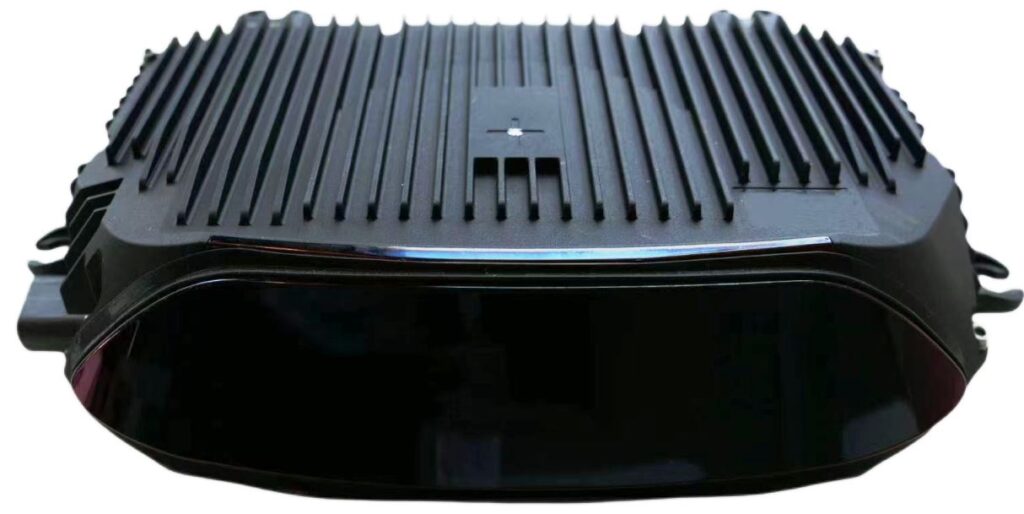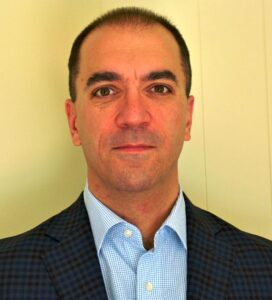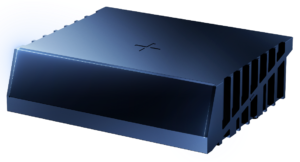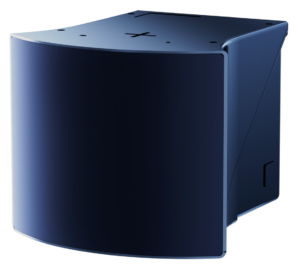
Falcon K provides ultra-long detection range up to 500 meters and can detect dark objects with 10% reflectivity up to 250 meters.
Less than two years after developing the world’s first automotive-grade high-performance LiDAR supply chain from scratch, Seyond supplied 200,000 vehicle units in 2023.
This established the company as the leading LiDAR supplier to the automotive industry, according to Yole Intelligence’s Global Automotive
LiDAR Market and Technology Report 2023.
Launched as Innovusion in 2016, the company was rebranded “Seyond” in December 2023. Derived from the fusion of “see” and “beyond,” the company says “Seyond encapsulates the very spirit of the LiDAR technology and solutions we’ve pioneered. It embodies the ability to ‘see beyond’ the ordinary, revealing what often remains hidden and providing a perspective with unparalleled precision”.
Automotive Industries (AI) asked Jason Ferns, Head of Automotive Product Marketing at Seyond to what the company owes its success.
Ferns: There are a few things. Number one is that we were able to deliver a very high-performance product in the Falcon LiDAR at a reasonable cost, which means it can be integrated into a consumer vehicle.

By high-performance, I mean Falcon can see ultra-long distances with extremely fine angular resolution.
This enables the LiDAR to see small objects at great distances which really helps support the functions of the vehicle.
Second, we were able to manufacture it at scale.
And finally, we have the right partners, both customers and suppliers. There are other partners with which we operate kind of in parallel to provide different parts of the solution.
AI: How are you retaining your dominant market share?
Ferns: Our focus right now is on the manufacturing side. We have put a lot of effort into making sure that the manufacturing is efficient, of high quality and at low cost.
Back in 2022, we started mass production, which means we were the first to ship an ultra-long-range LiDAR at scale.
We wanted to set ourselves apart from other LiDAR companies, which we have achieved.
In addition, we are expanding our product portfolio, to include other LiDAR units for different mounting positions or other operating domains.
AI: How do you meet the challenges of the automotive industry requirements for product manufacturing, supply chain maturity and reliability?
Ferns: It is difficult to manufacture LiDAR. It is not a technology that the automotive world has used for decades, like many other parts.
So, we really had to think from the ground up about the LiDAR design, and then how to make it easy to manufacture.
Our approach includes a lot of automation in our manufacturing line.
On our latest line, 90% of the manufacturing steps for assembling the unit, calibrating it, and testing it are completely automated.
This is a big contrast to other LiDAR companies right now, where most manufacturing is still manual.
To get to that level of automation we had to do a lot of work in-house. The tools we wanted to use on our line did not exist. An in-house group was set up to design all the manufacturing tools, which meant we were able to optimize the tooling and we own 100% of the manufacturing intellectual property.
AI: What were the other challenges in building your supply chain from scratch?
Ferns: In addition to having to create the manufacturing, technology and equipment for our line, we had to work very closely with some of our key suppliers to co-design some of the components.
On one hand, we have done a good job of avoiding using any components with exotic technology, and instead rely on proven mature technologies.
On the other hand, there was not always an off-the-shelf component to meet our needs. So, we would work with several of our key suppliers over a

period of time to co-design and come up with something that met the specs and could be easily manufactured.
AI: How does your product mix align with the needs of your customers in the automotive and intelligent transportation system sectors?
Ferns: We have a very high level of alignment. Since we started as a hardware company, we have added a software component to our product matrix.
Our OmniVidi software performs a perception function based on the output of the LiDAR, which is essentially a cloud of points or pixels in space with 3d coordinates. And that’s the LiDAR’s job.
OmniVidi takes all those points and groups those that belong to a common object. It then classifies the object as a pedestrian, a car, a bicycle or any other object.
It depends on our customers, some of which use their own perception tools. Others look to us for the perception solution, which provides us with annuity income.
Going back to the hardware side, we now have two families of products. The first is our Falcon LiDAR, which now comes in two different form factors. Our original one is a flat shape, which is good for roof mounting.
We now offer the Falcon Q, which is more of a cubic shape for mounting on bumpers or grills.
And then we also have other wavelengths.
Our Falcon family is using a longer wavelength 1550 nanometer laser, which is very good for seeing very long distances.
We also have our Robin family, which is more compact.
It uses the infrared 905-nanometer wavelength, which is closer to visible spectrum.
This will help us to grow markets where a compact form factor is prioritized over super long range.
With Robin, we are still addressing high-performance LiDAR for applications needing 200 meters distance.
AI: How will you meet the projected increased demand for vehicle-based LiDAR?

Ferns: So far, I think, we have done very well building our manufacturing lines. Our first automotive-grade line was built in 2021 and started production in early 2022.
About a year later, we brought our second line on stream, and today we have three manufacturing lines that can meet present demand.
Because we own the tools, we control the whole process. Therefore, it is quite easy just to copy and paste our next line. After completing site preparation, we can get a manufacturing line up in six to eight months.
That gives us a lot of flexibility when we secure additional large orders with other OEMs.
AI: In 2023, Seyond announced partnerships with several companies across the globe, including Wideye, Exwayz and D2 Traffic. What are the benefits to your customers?
Ferns: Yeah, when we were super excited to be collaborating with those partners. It has been extremely beneficial to us and our customers.
We take pride in collaborating very closely with our engineering level, our partners and our customers. We learn from each other and optimize the product by diving deeply into the engineering to exchange information and ideas.
That exchange really helps us to be better at solving our customers’ problems. And then that makes the product stronger overall. So, it has been very helpful to create this environment of trust with the customers and our partners.
AI: What are your plans for further advancing LiDAR functionality?
Ferns: We have a new family of products coming out. Some of them, such as Robin W, have a very wide field of view. This is kind of a unique spec in the industry right now. So, we think that we’ll have a lot of new use cases.
We have the OmniVidi software as well, which is, is going to help bridge the gap and provide a lot of perception solutions that are needed.
Demand is going to grow. There will be more and more cars including LiDAR in their vehicles and we will definitely be part of that rollout.
As it evolves, we’ll continue to contribute and drive what’s needed.
Off the vehicle as well, we have another side of our business is intelligent transportation.
We’re putting our LiDAR on a light post to monitor an intersection or highway. Such installations are contributing to road safety in both urban and highway environments as they can see hundreds of meters down the highway.
Once that information is part of the infrastructure, there are all kinds of ways that can be used to improve the safety and efficiency of the system.
It is not limited to roads. The technology can be used for rail, shipping and even crowd management at large events.
It is also suitable for last mile robotic delivery. There are really a lot of areas. I think we’ve just scratched the surface so far. So, I’m very, very excited about the coming years.











More Stories
Venti Technologies Wins Multiple Pinnacle Awards for Innovation and Achievement in Technology
Launch of AltaScient.ai: New horizons for Risk and Sustainability Analytics
Expert Tips on Detailing a Car